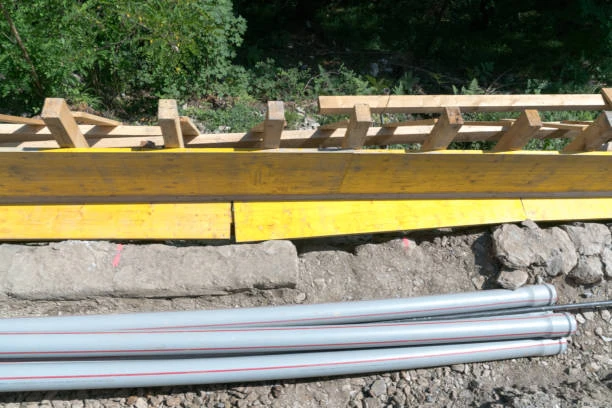In recent years, an Ohio city has made headlines by announcing the replacement of its HDPE (High-Density Polyethylene) pipes after just 20 years of service. This decision raises several questions about the longevity, effectiveness, and overall reliability of HDPE pipe in municipal applications. In this article, we will delve into the characteristics of HDPE pipes, explore why the city has opted for their replacement, and discuss the implications for infrastructure across the United States.

What Are HDPE Pipe?
HDPE pipes are made from high-density polyethylene, a thermoplastic known for its strength, flexibility, and resistance to corrosion. These pipes are commonly used in various applications, including water supply systems, gas distribution, and sewer systems. Their resistance to chemicals and low friction characteristics make them a preferred choice for many municipalities.
Advantages of HDPE Pipe
- Durability: HDPE pipes are designed to withstand harsh conditions, including extreme weather and chemical exposure.
- Lightweight: Compared to traditional materials like ductile iron or PVC, HDPE pipes are significantly lighter, making transportation and installation easier.
- Corrosion Resistance: HDPE does not rust or corrode, which can extend the lifespan of a piping system.
- Flexibility: The flexibility of HDPE allows for easier installation, especially in challenging terrains.
- Cost-Effectiveness: Although the initial cost can be higher than some alternatives, the long-term savings in maintenance and replacement make HDPE pipes a cost-effective choice.
Why Is the Ohio City Replacing Its HDPE Pipe?
Despite the many advantages of HDPE pipes, the decision to replace them after only 20 years raises eyebrows. Here are some reasons that may have influenced this choice:
1.HDPE pipe Material Degradation
One of the primary concerns with HDPE pipes is the potential for degradation over time. Factors such as UV exposure, temperature fluctuations, and soil conditions can affect the integrity of the pipes. In this Ohio city, the combination of environmental factors may have led to premature wear and tear.
2. HDPE pipe Increased Demand
As cities grow and populations increase, the demand for water and sewage services rises. The existing HDPE infrastructure may not meet the current needs, necessitating a more robust solution.
3. HDPE pipe Technological Advancements
New materials and technologies are constantly emerging in the field of plumbing and infrastructure. The city may have identified newer, more durable materials that offer enhanced performance over traditional HDPE pipes.
4. HDPE pipe Regulatory Changes
Changes in regulations regarding water quality and safety can impact the materials used in municipal water systems. If new standards have been introduced, the city may be compelled to upgrade its infrastructure.
5. HDPE pipe Frequent Repairs
If the city experienced frequent repairs on the existing HDPE pipes, the cumulative costs and inconveniences could lead to a decision to replace the entire system. Continuous maintenance can often become more expensive than a complete overhaul.
The Impact of HDPE pipe Replacement
Economic Considerations
The replacement of HDPE pipes involves significant economic considerations. While the upfront costs can be high, the long-term benefits may outweigh these initial expenditures. Improved infrastructure can lead to enhanced water quality, reduced leakage, and ultimately, lower operational costs for the city.
Environmental Factors
Replacing HDPE pipes can also have environmental implications. If the old pipes are not disposed of properly, they could contribute to landfill waste. However, many HDPE pipes can be recycled, and cities are increasingly adopting sustainable practices in their infrastructure projects.
Community Concerns
Residents may express concerns about the disruption caused by the replacement process. Construction activities can lead to road closures, noise, and dust, affecting the quality of life. Effective communication and planning can help mitigate these concerns and keep the community informed throughout the project.
Future of HDPE Pipe
The decision of this Ohio city to replace its HDPE pipes highlights the importance of ongoing assessment and maintenance of municipal infrastructure. While HDPE pipes have proven advantages, they are not infallible. Municipalities across the United States must continually evaluate their piping systems and remain open to innovative solutions that enhance water and sewage management.
Emerging Technologies
With advancements in technology, new types of pipes are being developed that may offer improved performance compared to traditional HDPE. Innovations such as composite materials and advanced polymers could play a significant role in future municipal infrastructure projects.
HDPE pipe Increased Research
As issues surrounding water quality and infrastructure integrity gain more attention, increased research into the lifespan and effectiveness of various piping materials is crucial. This can lead to better guidelines and standards that ensure the reliability of municipal water systems.
Conclusion
The replacement of HDPE pipes in an Ohio city after just 20 years raises important questions about the longevity and reliability of this material in municipal applications. While HDPE pipes offer numerous advantages, they are not without their challenges. Ongoing assessment, community engagement, and a willingness to embrace new technologies will be key to building and maintaining resilient water infrastructure for the future.
FAQs
1. How long do HDPE pipes typically last?
HDPE pipes are designed to last between 50 to 100 years under ideal conditions, but environmental factors can shorten their lifespan.
2. Why are municipalities choosing HDPE pipes?
Municipalities choose HDPE pipes for their durability, resistance to corrosion, flexibility, and cost-effectiveness over the long term.
3. Can HDPE pipes be recycled?
Yes, HDPE pipes can be recycled, and many municipalities are adopting sustainable practices to ensure proper disposal and recycling.
4. What are the signs that HDPE pipes need to be replaced?
Signs include frequent leaks, decreased water quality, visible degradation, and increased maintenance costs.
5. Are there alternatives to HDPE pipes?
Yes, alternatives include PVC, ductile iron, and composite materials, each with its advantages and disadvantages depending on the application.


















